History of coal
Coal comes from the decomposition, more than 300 billion years ago, of plant organic matter. When this plant biomass was wrapped in water and suffocated by mud and sand, it progressively sank and transformed into sediments, under heat and constant pressure effects.
The plant matter transformation into coal produced gas, including methane (CH4), which is trapped in sediments. It is coal bed methane. In Lorraine, it is composed of more than 95 % of methane.
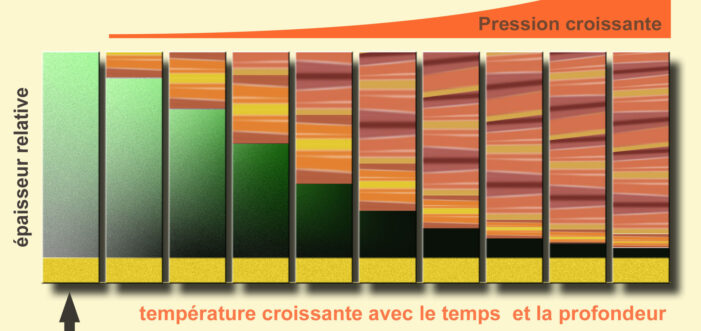
Representation of the process of coalification = transformation of more or less thick layer of plant debris (green left) in coal (coal black right) during geological ages. This is a very slow process (millions of years or hundreds of millions of years).
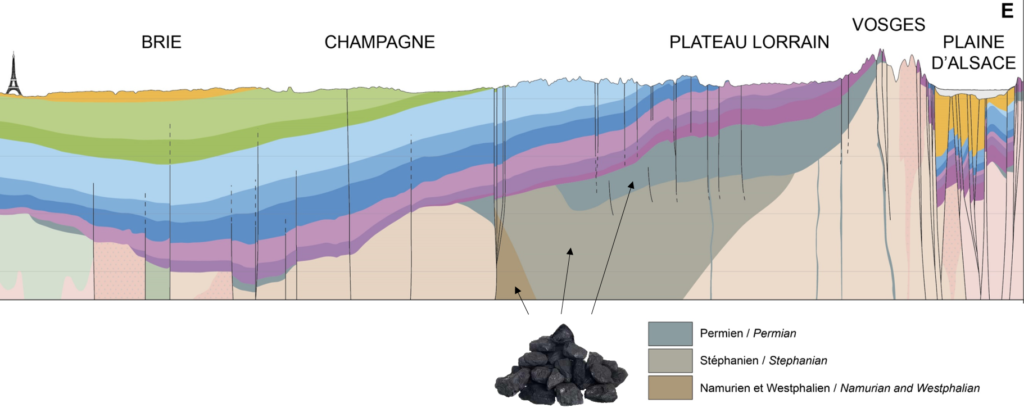
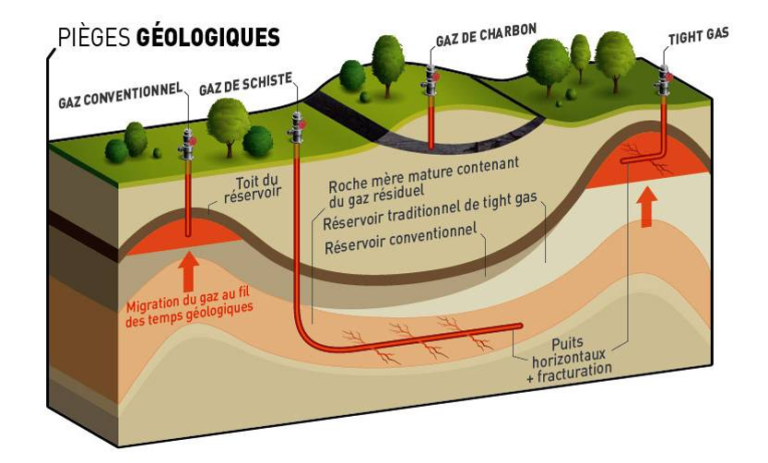
Coal bed methane, coal mine methane, what is the difference?
Coal bed methane and coal mine methane refers to the same gas: methane (CH4). It is captured in a carbonate sedimentary rock: coal. The difference between coal bed methane and coal mine methane is the way they are released from the rock.
Coal bed methane (CBM) is trapped in unmined coal veins. They are located between 100 and 2 500 meters deep and are, in Lorraine, flooded. This gas is composed, between others, of methane trapped (adsorb) in the coal veins. Coal, thanks to its porous nature, holds on its surface methane molecules.
Coal mine methane frees itself from ancient disused coal mines, but non-flood. Gas is extracted with pumping in galleries. This gas is currently exploited in the North of France or Germany.
A naturally fracked coal
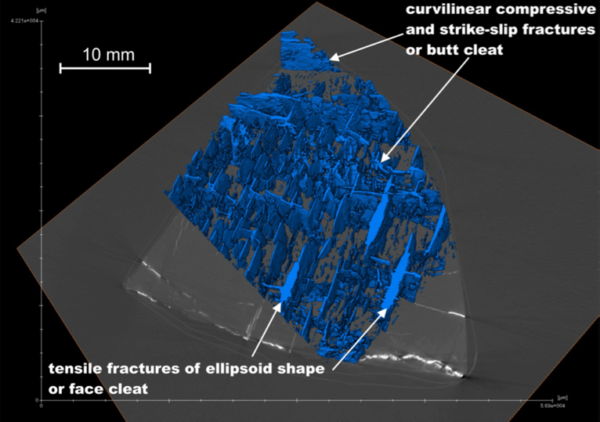
Observation of Lorraine coal with X-ray tomography
Extraction without hydraulic fracking
Lorraine coal bed methane is extracted only thanks to a pump! To extract gas trapped in coal veins, we have to pump water in cavities. After this water recovery, the pressure falls and gas is released.
To reach coal veins, a vertical drilling is dug 1 000 meters (3,280 feet) depth. Horizontal arms spread in veins for 1 or 2 km (3,280 to 6,561 feet).
Unlike shale gas, extraction of coal bed methane does not require hydraulic fracking! Indeed, Lorraine coal is naturally fractured and the gas can be released only by pumping.
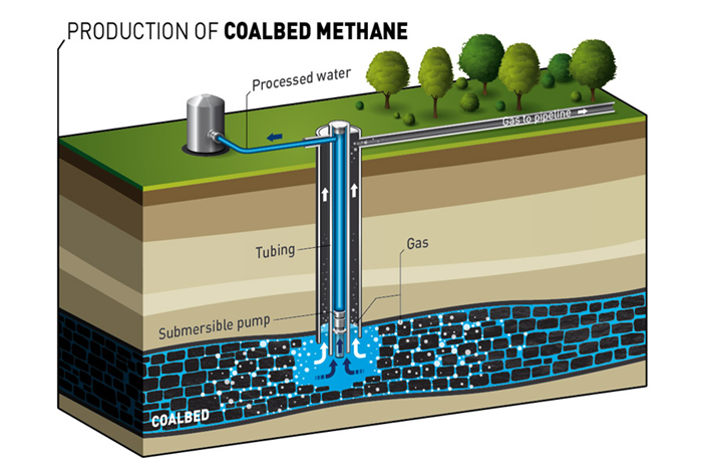
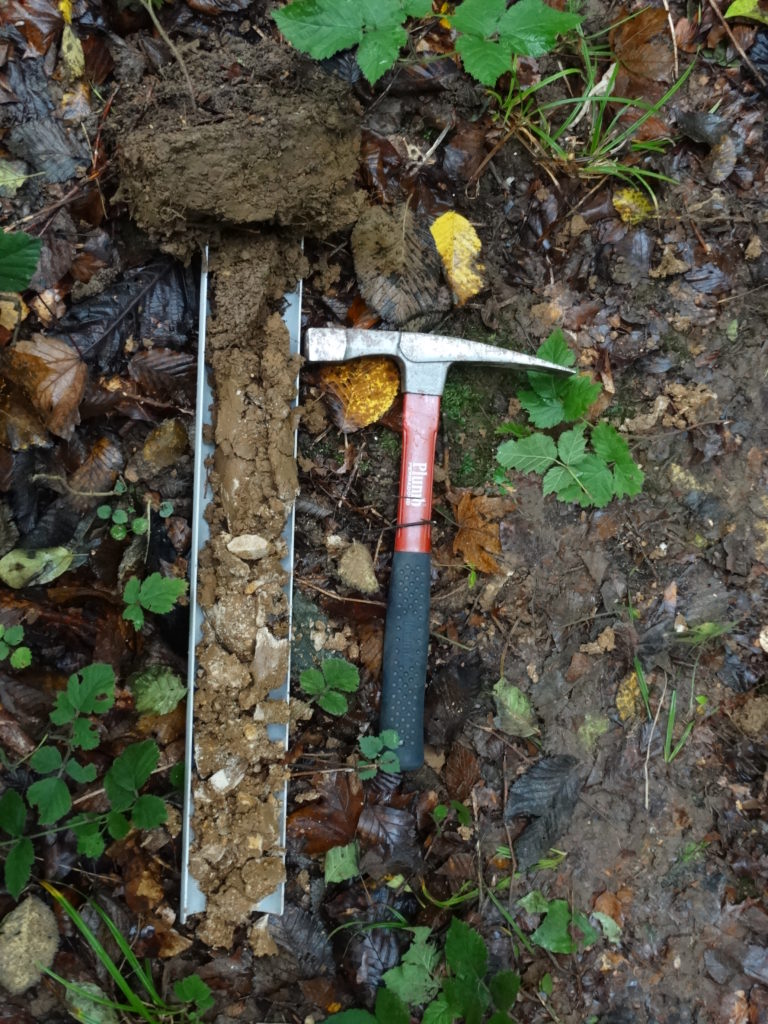
Monitoring & recommendation
It exists on 3 types of risks:
Accidental: the possibility of a major leak could only happen in high-pressure transportation sections. Implantation of such segments has to be wisely chosen.
Environmental impact on underwater, air, soil quality, public health, and ecosystems:
- Make sure that good exploitation practices are followed, added to a perfect knowledge of the exploitation site.
- Optimise monitoring strategy geosphere–biosphere–atmosphere to prevent water and soil pollution.
- Study coal composition to prevent potential sanitary impact linked to water contamination by coal organic compound.
- The non-use of hydraulic fracking of the geological environment will sharply decrease risks.
The noise pollution linked to traffic and the exploitation chain could be limited with appropriate practices.
